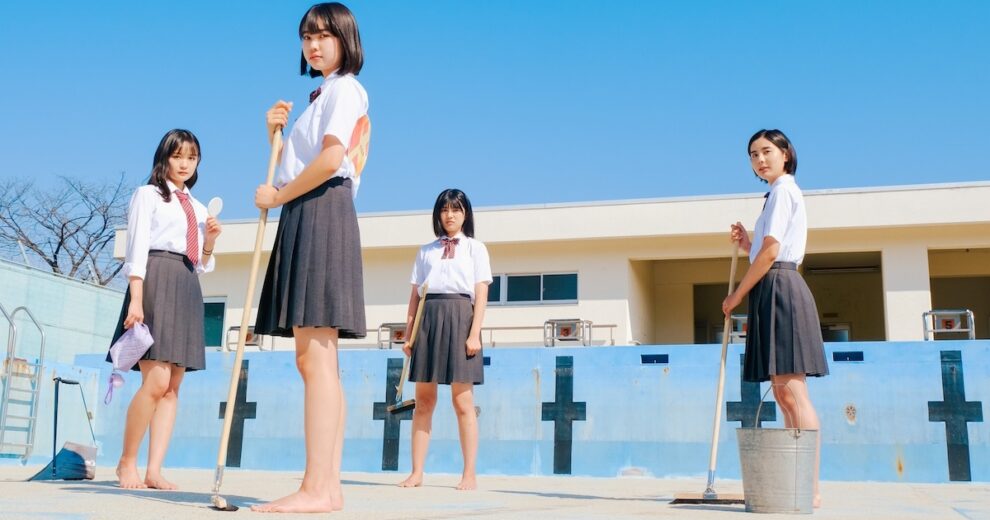Based on a high school play by the Tokushima City High School Drama Club, “Swimming in a Sand Pool” does function intently like a stage play, but the fact that the majority of the story takes place inside a swimming pool makes it stand out from other similar productions.
Swimming in a Sand Pool is screening at Osaka Asian Film Festival

It is summer vacation, but high schoolers Kokoro and ‘pretty girl' Miku have been instructed by their PE teacher, Yamamoto, to clean the swimming pool. The pool has been drained of water and is covered with sand from the baseball team's field, which lies just next to it. The girls are not exactly eager to do so under the blazing sun, while Miku soon has an argument with the teacher, since she is wearing make-up against the school rules. Furthermore, Chizuru, a rather quirky girl who is practicing her swimming on a chair inside the empty pool while boasting her likeness for the baseball team's pitcher, and Yui, another girl who was not supposed to be there, soon join them. The girls discuss school life, the concept of beauty and makeup, love and other topics, while the friction with their teacher soon increases.
Nobuhiro Yamashita has definitely proven that he can shoot coming-of-age school dramas with “Linda Linda Linda” but this time, he is faced with a completely different animal, with “Swimming in a Sand Pool” being a dialogue-heavy, essentially single location movie. As such, it is interesting to see what “tricks” he implements in order to avoid having a movie that looks completely like a stage play. The first, quite evidently, is the particular location, with the pool filled with sand being a rather unique location, which is also implemented nicely in the narrative, with the cinematography and the framing, as in the case of the placement of the girls in it, being quite intricate. Regarding the visuals, the focus on the girl's legs borders on fanservice, although Yamashita keeps the particular aspect tamed.
Check also this interview
The second is the moments of friction and tension that do break the somewhat flat narrative in the most entertaining way. Chizuru's attitude and overall demeanor are definitely a factor in that regard, with her actions and her words, especially regarding her love interest, being hilarious to watch, and her being adorably quirky. The second is the way the students obviously dislike Yamamoto and her strictness, with Miku eventually getting into a rather vocal fight with her, in probably the most memorable scene of the movie.
And while Yamashita has taken care of showing that beneath the teacher's toughness there is also love for her students through a number of brief scenes, and that Miku is the popular type who has become a cynic and looks down on a number of her classmates, their fight also highlights that the girl is actually already a woman, treating her teacher as an equal, something that does not apply to her classmates. The third are a couple of scenes that do move away from the pool, even if not particularly far, with Chizuru's visit to the baseball definitely staying in mind.
The dialogues are also quite interesting, particularly as the film closes to its finale. The concept of beauty in the school environment becomes a hot topic, as much as if menstruation is a problem or something to be exploited, while the way students must deal with failure concludes the rather rich context here.
The editing results in an expectedly slow pace, although the aforementioned elements do give a sense of movement to an otherwise ‘still' movie, while at 87 minutes, the film definitely does not overextend its welcome.
Saki Hamao as Miku stands out with her somewhat ‘bitchy' attitude, with the same applying to Mikuri Kiyoya, who steals the show as the quirky Chizuru. Lastly, Honami Sato in the role of the teacher is as good as always, even in a secondary role this time.
Although quite close to a stage-play, “Swimming in a Sand Pool” has enough cinematic elements to move beyond the restraints of similar films while the quality of the dialogue, the acting and the characterization definitely make it a film worth watching.















